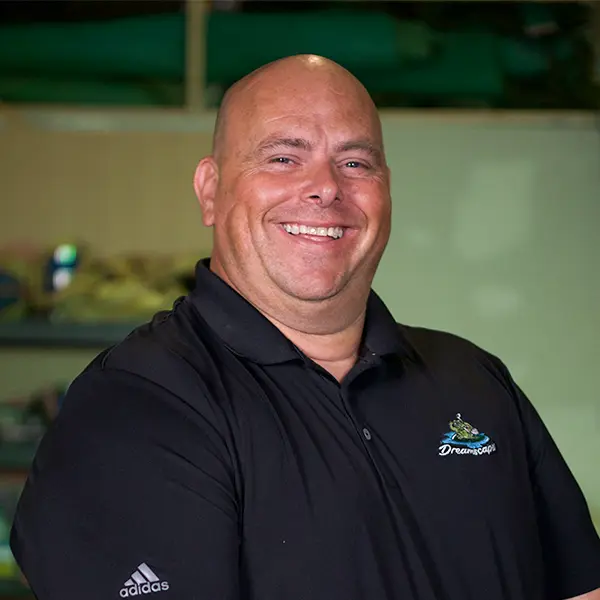
How Can I Help?
Frequently Asked Questions
There are a variety of plants and fish that can thrive in a pond environment, depending on the specific conditions of your pond. Here are a few examples:
Plants:
- Floating plants, such as water lilies and lotus, provide shade and help to reduce algae growth
- Marginal plants, such as cattails and rushes, grow at the edge of the pond and can help to stabilize the soil
Submerged plants, such as hornwort and waterweed, oxygenate the water and provide a habitat for aquatic creatures - Bog plants, such as ferns and irises, can grow in damp soil around the pond and add visual interest
Fish:
- Koi are a popular ornamental fish that can grow quite large, so they require a larger pond with good filtration
- Goldfish are a smaller and hardier option that can be kept in smaller ponds with less filtration
- Mosquito fish are small and efficient at eating mosquito larvae, making them a good choice for ponds with mosquito problems
- Catfish and tilapia are suitable for larger, deeper ponds and can be harvested for food
When choosing plants and fish for your pond, it’s important to consider factors such as the size of your pond, the climate in your area, and the types of predators that may be present. It’s also important to research the specific needs and care requirements for each species.
Water treatments such as beneficial bacteria, dechlorinators, and algae control products promote a healthy pond ecosystem. At Panhandle Ponds, we prefer to work in harmony with nature rather than against it, so we strive to support a balanced ecosystem. Upon inspection, we’ll determine the best treatment for your pond and provide you with a clear understanding of the specifics.
The distance a pond should be from a house may depend on several factors, including the size of the pond, the proximity of the property line, and the zoning requirements in the area.
As a general guideline, it’s recommended that a pond be located at least 50 feet away from a house. This distance can help reduce the risk of flooding or other issues that could affect the structural integrity of the house.
Owner Bubba Hogan and hid brother, David, started with built their first pond over 25 years ago.
Pondless water features are generally low-maintenance. However, common issues that can affect their appearance and functionality include algae growth, clogged pipes, pump malfunction, water quality issues, and water loss. To prevent and address these problems, regular cleaning, proper water treatment, and pump maintenance are recommended.
The frequency of cleaning your pond can depend on a variety of factors, such as the size of the pond, the number of fish, and the amount of debris that falls into the water. However, as a general guideline, it is recommended that you perform a full cleaning of your pond once a year. This involves draining the pond, removing any debris or sludge from the bottom, and cleaning the filters and pumps.
In addition to annual cleanings, it’s also a good idea to perform regular maintenance tasks throughout the year to keep your pond healthy and clean. This can include removing any fallen leaves or other debris from the surface of the water, trimming back overgrown plants, and checking and adjusting the water chemistry as needed.
If you notice any issues with your pond, such as excessive algae growth or cloudy water, it may be necessary to perform additional cleanings or maintenance tasks to address the problem. In general, keeping a regular schedule of maintenance and monitoring the health of your pond can help to prevent major problems from developing.
In Florida, the regulations for building a pond may vary depending on the specific location and size of the pond. In some cases, a permit or other form of permission may be required before construction can begin. Rest assured that we’ll help you in every aspects of your water feature build, from paperwork to the final result.
We love for you to be able to enjoy your water feature worry-free. If there’s anything that falls on us, you have lifetime warranty to keep you at ease. We’ll fix it for you, no questions asked.
The best way to clean a pond is through an “exploratory drain and clean” process, which involves draining the pond, cleaning the sludge, and inspecting the liner for any leaks. Other steps in basic pond cleaning include pressure washing, removing debris, skimming the surface of the water, removing leaves and other waste, and cleaning the filters.
